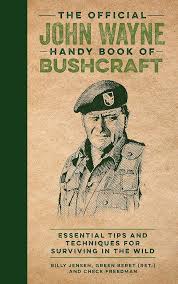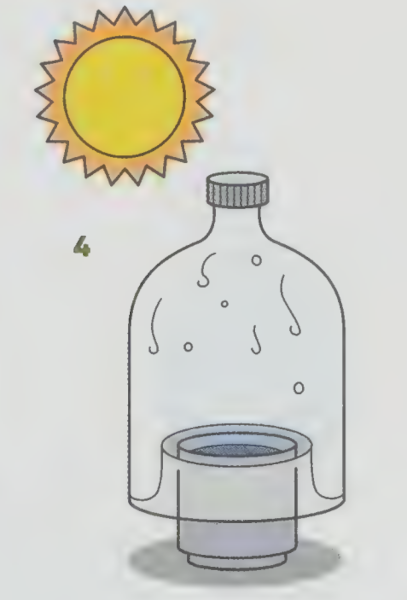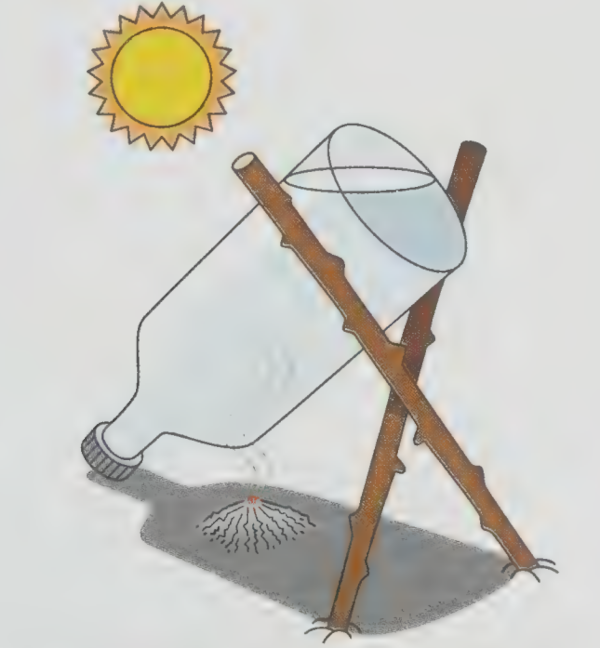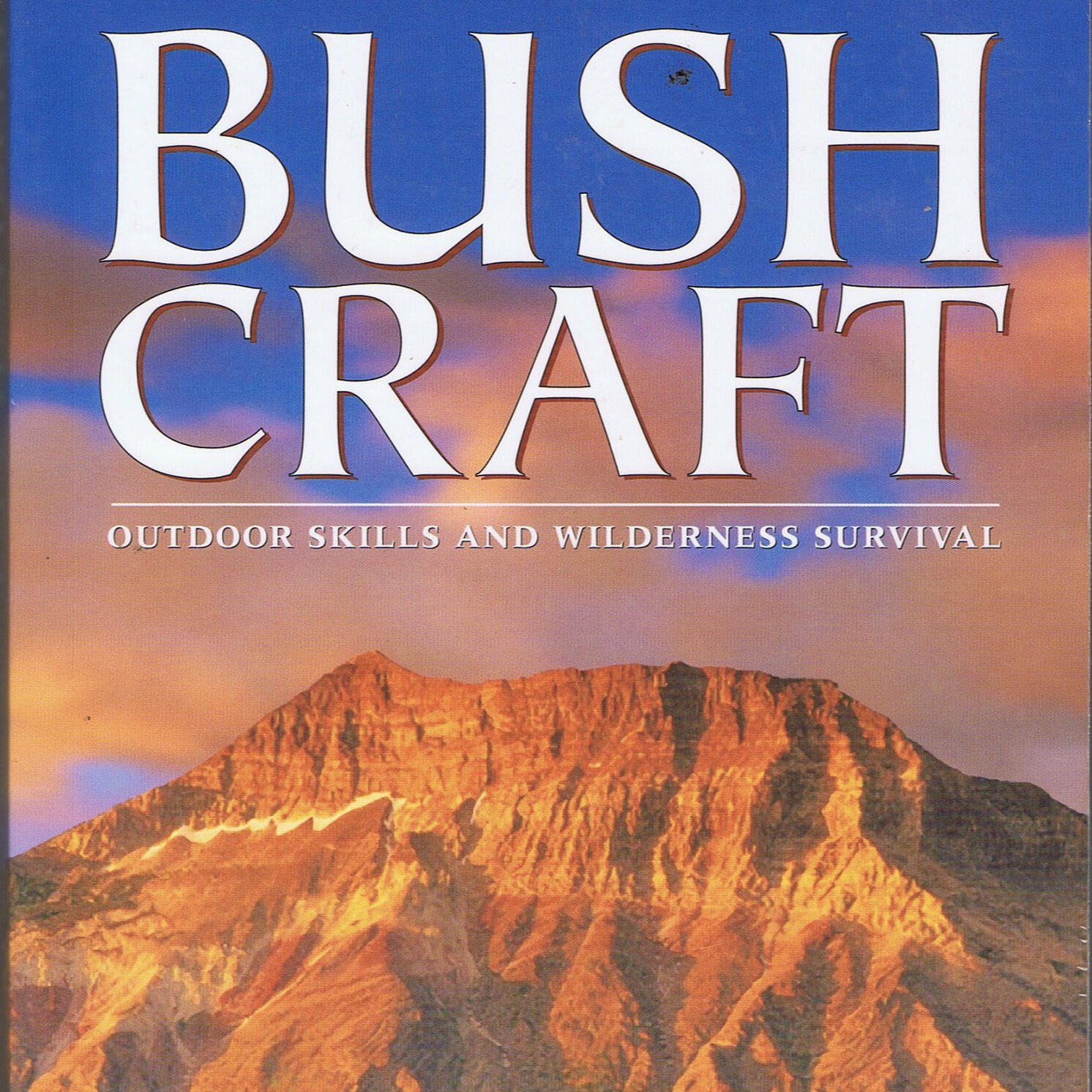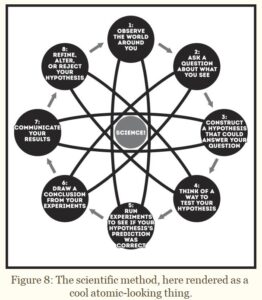Today’s review is for “The Pocket Outdoor Survival Guide” by J.Wayne Fears.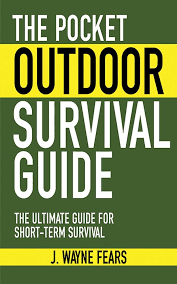
I had not planned for this to be the next review. I got looking at a copy and burned right through it.
One of the merits of this book is that it is highly digestible. I read through it in a single (admittedly extended) lunch break.
This book is written specifically for outdoorsmen who might become lost in the woods. The premise is that such individuals are most likely to be found within 72 hours of the search being initiated.
Preparation
The first few chapters, logically enough, deal with preparations before your trip to ensure that a search is conducted should you not return by an expected time.
Give an itinerary to a responsible individual [or better still, several!].
A similar account of your intentions might be placed in a plastic bag and left under the windscreen wiper of the vehicle you used to reach the woods. Give it a label such as “For Attention after 24th April…”
A list of useful advice to include is given, including giving the make and sole pattern of the footwear you are wearing, which will be useful to trackers.
Although not suggested in the book, this idea might be extended by including a photograph of your actual boot soles. (Putting a worn sock in for the tracker dogs may be going too far, however!)
There is a brief summary of how a search and rescue may be conducted. I found the version of this in “Desert Survival” better.
Later in the book, how to deal with a member of your group going missing is covered, which is a subject many books do not cover.
Survival Kit
The section on survival kit does show some originality and fresh thought. He advises that one prepares for three unexpected extra days to any trip.
Fears’ personal, “two pound” kit is given as:
◦ (Coghlan’s) Tube tent
◦ Strike-anywhere kitchen matches in waterproof match safe
◦ Flashlight
◦ Fire starters [hexamine fuel blocks?]
◦ Signal mirror [Star Flash]
◦ Police whistle [actually a Fox 40 is suggested in the text]
◦ MPI Emergency Space bag
◦ Parachute cord – 50'
◦ Aluminum foil – 36" x 36"
◦ Insect repellent [sachet]
◦ Water purification tablets
◦ Pocket Survival Guide [Fears’ book]
◦ First Aid Kit
◦ Gallon Ziplock bag.
These items are in addition to a belt knife, map and compass, GPS, water canteen, personal medication and cell phone/two-way radio.
How this kit is carried is not made clear, other than it is packed inside the gallon zip-lock bag, which may also be used as a water carrier. [I suggest you reinforce the seams with duct tape]
The bulk of the kit would suggest that it is in some form of daypack. Some emergency items are best carried on one’s person should the daypack and survivor part company. A lot of my basic kit is in my trouser pockets or on my trouser belt.
The somewhat misnamed “tube tent” is an item not often included in survival kit lists. It seems to be a reasonably priced and useful item.
There are variants that have silver Mylar lining, and/or doors at the end. The silver-lined versions should probably be turned silver-side out in desert conditions.
Since the plastic is impermeable, condensation in these tube tents may be an issue if there is not a flow of air. However, one would want to partially block the ends to reduce draughts on the sleeper(s).
Leaves or similar could be piled underneath for more padding and insulation when sleeping.
Drip-wicks added to the suspension cord are recommended.
Fears echoes my own view that an emergency is no time to rely on gadgets or primitive skills to provide you with fire.
Fears suggests replacing the matches often since they “have a short shelf life”. This is not a concern that I have seen in other books.
My kitchen drawer has matches that must be more than fifteen years old and that still light. Perhaps out in the damp woods it is different, but a match safe that is genuinely waterproof should have some influence.
While the Star Flash mirror is recommended in the book, other items will serve just as well without the high price tag.
Water purification tablets and insect repellent are sound additions, although oddly he only packs a single sachet of insect repellent alongside a whole bottle of purification tablets.
A small bottle of insect repellent would last several nights, and be very welcome should your stay be extended. Some insect repellents may be used for fire-lighting, remember.
The space bag is like a Mylar space blanket, but a closed bag. These used to be fairly common, but nowadays it is hard to find anything except the foil blanket.
A space blanket or two is a good substitution, and a blanket is somewhat easier to vent.
Heavier foil lined bags with a green or orange outer are on sale. These resemble an All-Weather blanket I have carried one of the latter in my daysack for decades. The blanket configuration is probably more versatile. It can be made into a cloak against the rain, for example.
Fears’ suggestions for a personal pocket first aid kit are much more practical than those in some other publications. I would suggest adding some aspirin and alcohol wipes. Aspirin may be used to reduce inflammation, reduce a fever and reduce the symptoms of colds or flu. Used alcohol wipes may be used for tinder.
In accordance with the book’s basic premise, there is no attempt to teach the reader navigation.
Wandering around can greatly hinder the efforts of a search party.
Fears notes that topics such as navigation and first aid are better learnt on a course or by deeper study than can be provided by a book such as this.
STOP
STOP, as in “Sit, Think, Observe and Plan” is advocated for readers who become lost or encounter a similar emergency.
While other books have different translations of this acronym, it remains sound advice.
As I was once told, “Don’t just do something, sit there!”
This section works well with the later section on dealing with fear and panic.
There is also some lip-service paid to “will to live” and “positive attitude”, but no real practical advice on this topic.
Signalling
The section on signalling has some good advice, such as avoid noisy areas such as waterfalls if you intend to use your whistle. If static, I would see what objects around the camp may be used as improvised drums.
Instructions on how to use the signal mirror reproduce those on the back of the Star Flash (which neglects to mention that you should move your forward hand as you move the mirror to aim it in a new direction!)
There is also an illustration of someone lying on their back and using a mirror, with no explanation of why this is being done. See here and here for information on the use of heliographs. 
Fears notes that a CD/DVD may be used as a reflector and already has a sighting hole. I am sceptical as to whether a sighting hole is really needed in a heliograph.
Most of us have some CDs or DVDs that have stopped working or that we do not want (remember AOL?). These can be cut to a pocket-size and shape by placing them in a freezer or warm water for ten minutes before cutting. Cover the back with some duct tape, since they may be fragile.
Glue a pair of CDs label to label for a more robust item that is mirrored on both sides.
The book also claims the “X” is the universal ground to air signal for help. Most other sources give the meaning of this symbol as “unable to proceed”, “unable to move” or “require medical assistance”.
“V” is more commonly used for “require assistance”, and easier to construct on the ground than “SOS”.
Too Brief in Places
While the book is easily digestible, some of the sections could have been greatly improved by one or two more lines.
For example, there is a section on removing ticks, but no mention of saving them in a plastic bag for later identification and testing to assist in prevention of any long term consequences of bites.
A photo caption describes using “your knife to get into the dry wood found in the center of a damp log”, but there is no explanation that what is being shown is a stick being used to baton the blade into the log.
The section “When There Is No Repellent” could have used some mention of materials such as pine oil that may be used as improvised insect repellents.
Similarly, the sections on fire, sleeping and shelter could have used some additional passages.
While a rock overhang can provide shelter, heating from fires underneath have been known to cause rockfalls.
The section on snow shelters could have used some mention of some of the improvised digging devices a survivor might use: vehicle hubcaps, plank of wood split from a log, digging stick, snowshoes, frying pan, billies etc.
Water
The chapter on water I had the most issue with.
Carrying plenty of water purification tablets is sound advice, although it is odd the same kit that packs a whole bottle of tablets has only a sachet of insect repellent to last the whole unplanned stay!
We have the flawed advice about boiling water for ten minutes, complete with the old chestnut complaining that boiled water has a flat taste. That is not going to be one of my major concerns if stuck in the woods for a couple of days!
Halazone and iodine are no longer recommended for water purification in the field since they do not affect certain organisms.
It is also claimed that water filtration devices make water safe to drink. They don’t! Viruses are too small for these devices to filter out, so chemical or thermal treatment of the water is still needed.
Food — Not a Necessity
The book does not attempt to teach trapping, fishing or identifying edible plants, since Fears points out a few days without food is not likely to be fatal.
The plant edibility test is reproduced, but lacks the stipulation that this should only be used on plants that are abundant in this area.
It is worth bearing in mind that “most people found within 72 hours” requires the outdoorsman to be overdue or authorities to receive some other notification before a search is launched. If your plan was to be in the woods a week or more, you could be roughing it for some time before anyone starts looking for you. Some of the stories in the book used for illustration have the survivor being in the woods for much longer than 72 hours before being found.
Tending a trot-line and building some traps may be a good way to occupy yourself while you are waiting. Animals often shy away from human activity and recent disruptions to their environment, so it may be some time before your traps get anything. Better to make them before you get hungry!
And if you are stuck in the woods, it is worth learning which trees have edible inner bark or can be harvested for sap.
The Pocket Outdoor Survival Guide is a quick read, and has some useful content.
Its chief strength is that it makes a survivor aware of their obligations in a rescue operation. These may be summarized as “Stay Put”, “Make Yourself Comfortable” and “Make Yourself Visible”.
It is, however, overly brief in certain sections, and in some places out of date.


